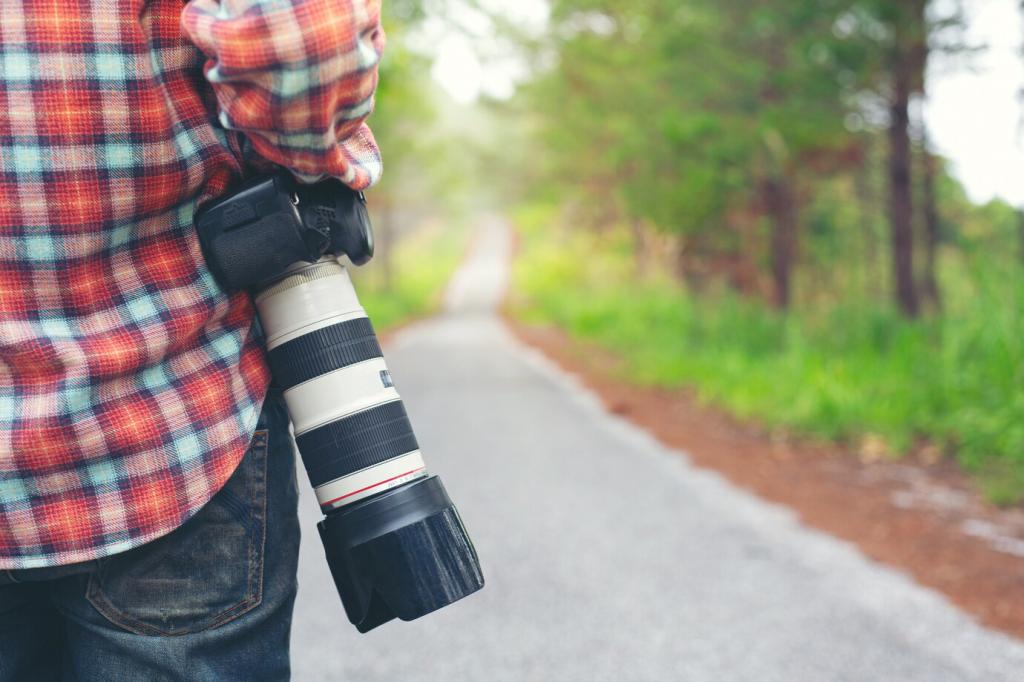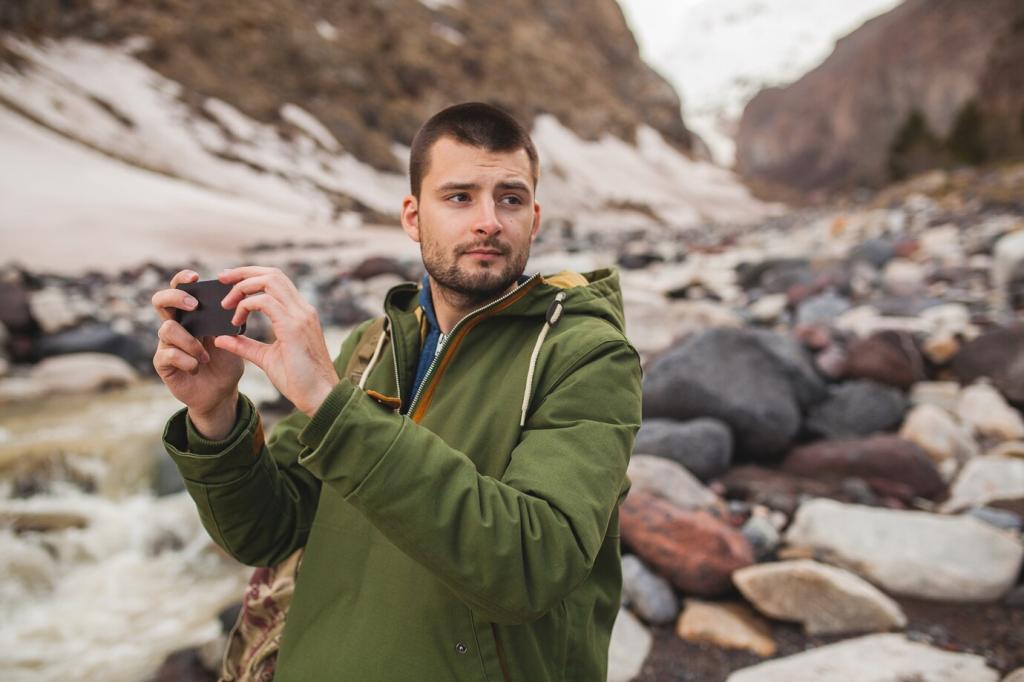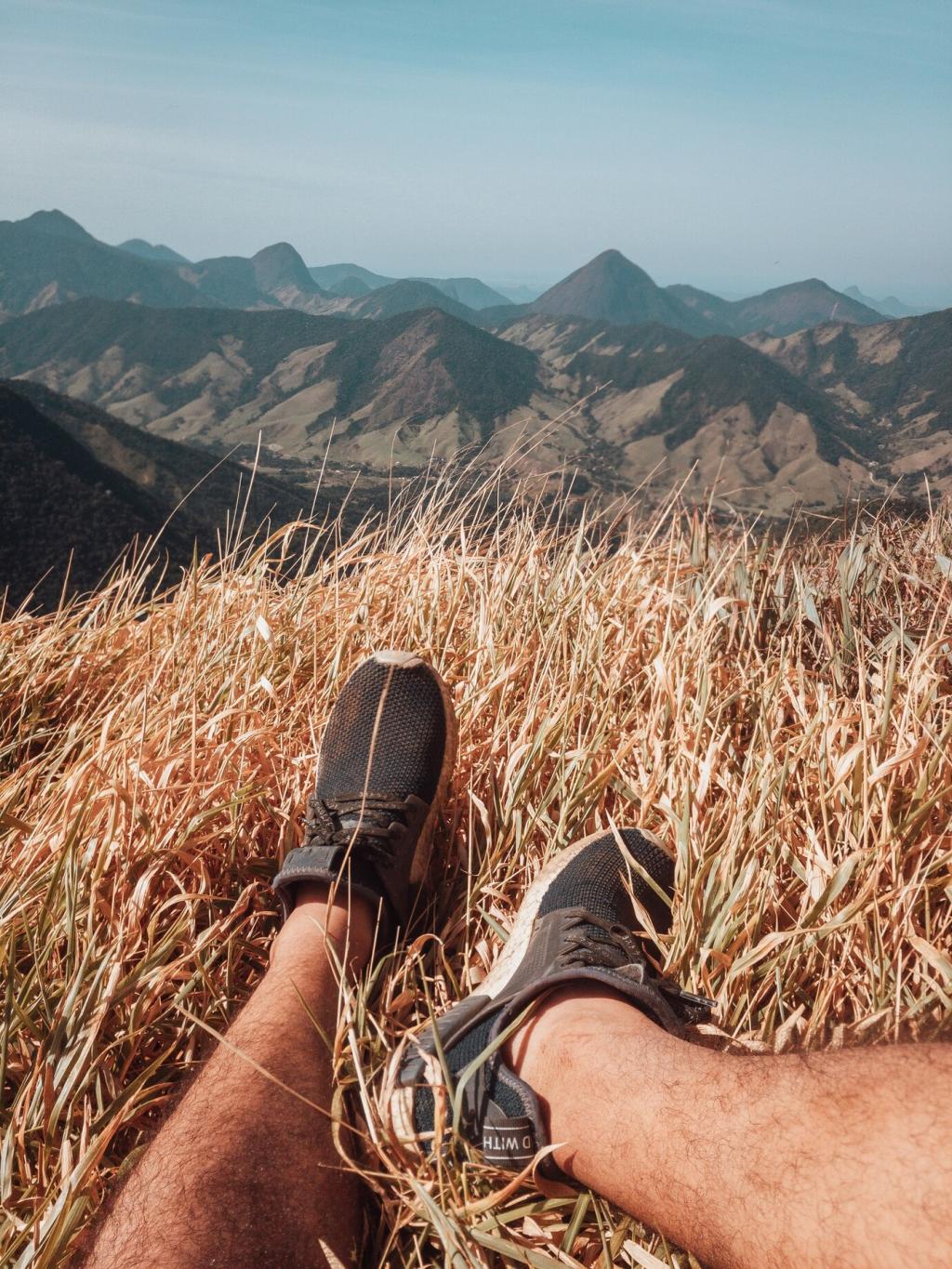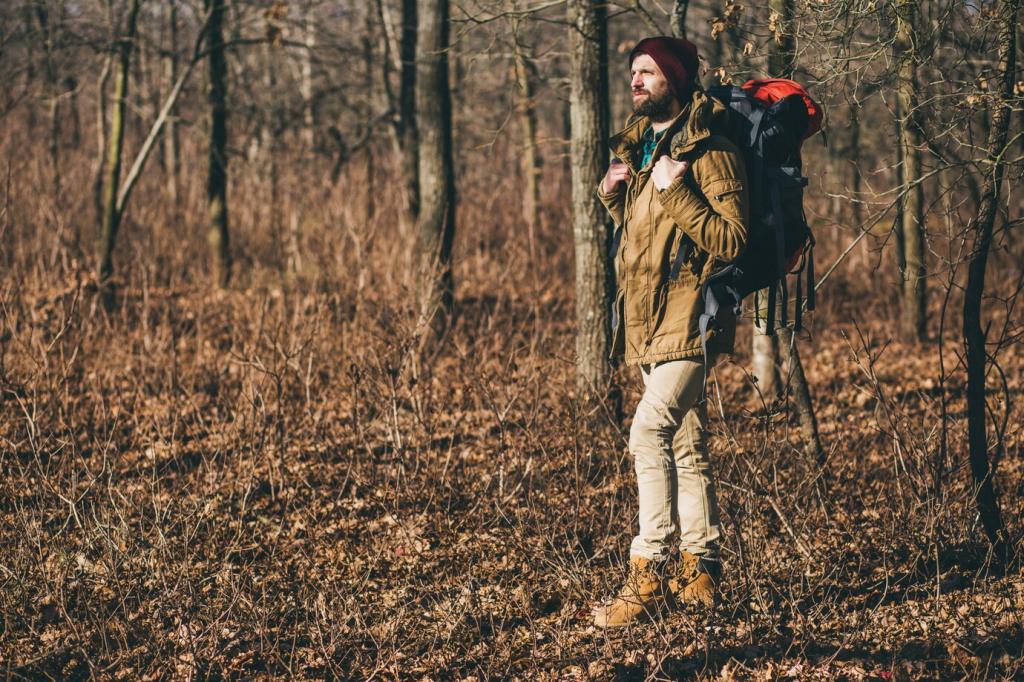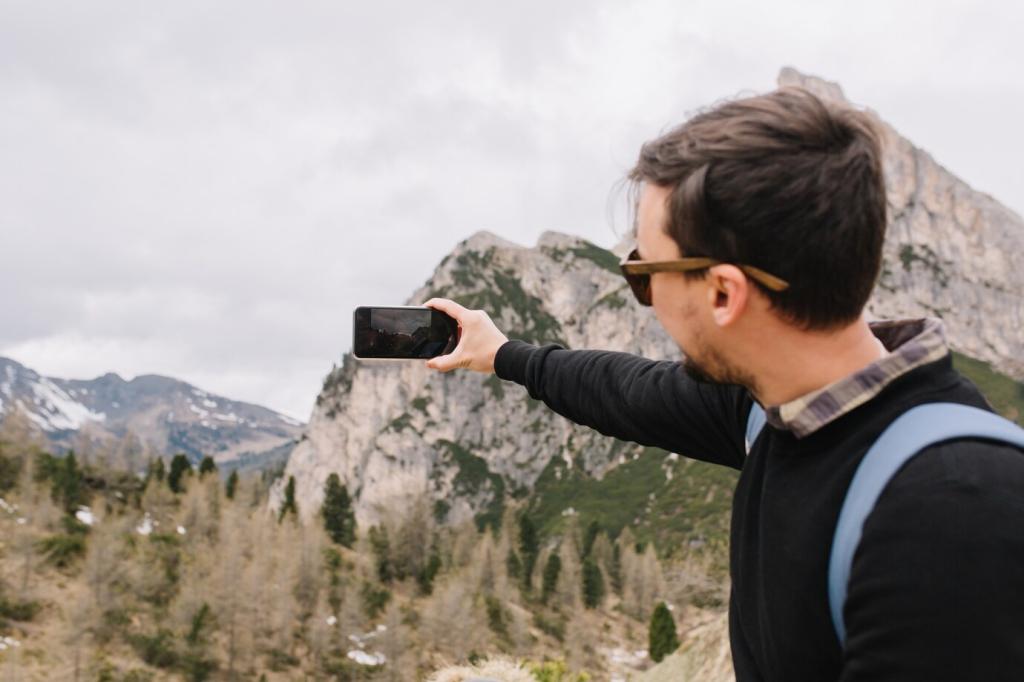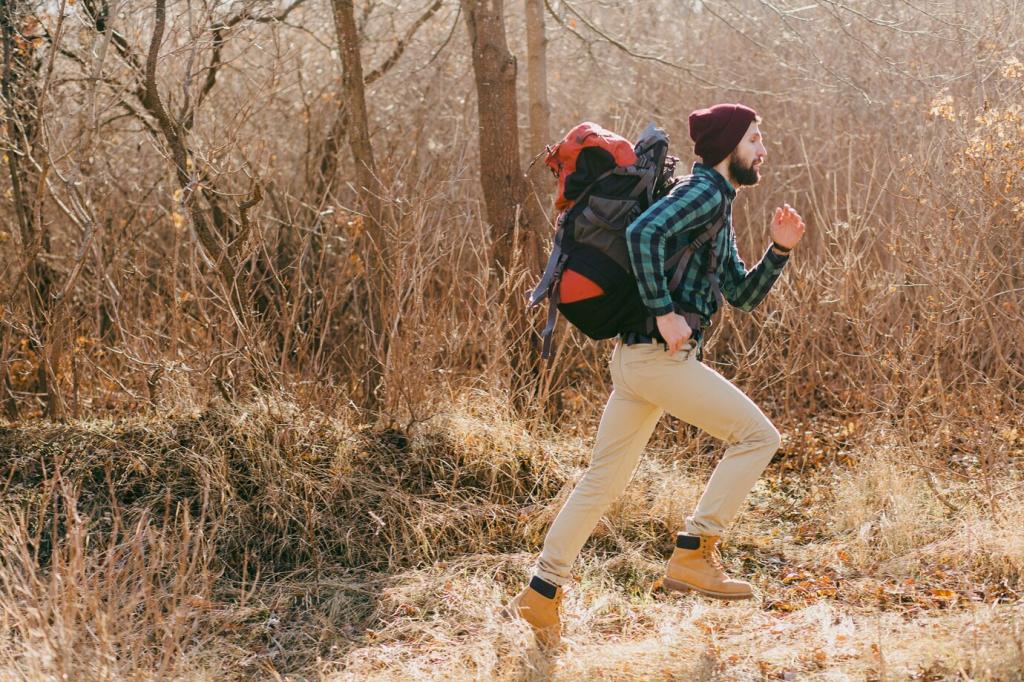Fieldcraft Foundations on Foot
Animals live by their noses and ears more than our eyes. Approach from a crosswind or headwind so your scent drifts away, testing the breeze with a damp finger or a pinch of grass. I once watched a fox freeze when a tiny gust shifted; one step back into the wind, and it relaxed. Share how you test wind on your own walks.
Fieldcraft Foundations on Foot
Roll each step from outer heel to toe, pausing at mid-stance to listen before committing your weight. Soft soles help, but rhythm matters more: one step per slow breath. A ranger taught me to plant only when sure of silence—no loose twigs, no rattling zippers. Tell us your favorite practice drill for quieter strides.

